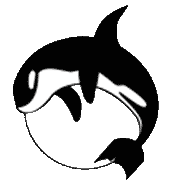Branchesi, Marica, Maggiore, Michele, Alonso, David, Badger, Charles, Banerjee, Biswajit, Beirnaert, Freija, Belgacem, Enis, Bhagwat, Swetha, Boileau, Guillaume, Borhanian, Ssohrab, Brown, Daniel David, Leong Chan, Man, Cusin, Giulia, Danilishin, Stefan L., Degallaix, Jerome, De Luca, Valerio, Dhani, Arnab, Dietrich, Tim, Dupletsa, Ulyana, Foffa, Stefano, Franciolini, Gabriele, Freise, Andreas, Gemme, Gianluca, Goncharov, Boris, Ghosh, Archisman, Gulminelli, Francesca, Gupta, Ish, Kumar Gupta, Pawan, Harms, Jan, Hazra, Nandini, Hild, Stefan, Hinderer, Tanja, Siong Heng, Ik, Iacovelli, Francesco, Janquart, Justin, Janssens, Kamiel, Jenkins, Alexander C., Kalaghatgi, Chinmay, Koroveshi, Xhesika, Li, Tjonnie G.F., Li, Yufeng, Loffredo, Eleonora, Maggio, Elisa, Mancarella, Michele, Mapelli, Michela, Martinovic, Katarina, Maselli, Andrea, Meyers, Patrick, Miller, Andrew L., Mondal, Chiranjib, Muttoni, Niccolò, Narola, Harsh, Oertel, Micaela, Oganesyan, Gor, Pacilio, Costantino, Palomba, Cristiano, Pani, Paolo, Pasqualetti, Antonio, Perego, Albino, Périgois, Carole, Pieroni, Mauro, Piccinni, Ornella Juliana, Puecher, Anna, Puppo, Paola, Ricciardone, Angelo, Riotto, Antonio, Ronchini, Samuele, Sakellariadou, Mairi, Samajdar, Anuradha, Santoliquido, Filippo, Sathyaprakash, B.S.  ORCID: https://orcid.org/0000-0003-3845-7586, Steinlechner, Jessica, Steinlechner, Sebastian, Utina, Andrei, Van Den Broeck, Chris and Zhang, Teng
2023.
Science with the Einstein Telescope: a comparison of different designs.
Journal of Cosmology and Astroparticle Physics
2023
(07)
, 068.
10.1088/1475-7516/2023/07/068 ORCID: https://orcid.org/0000-0003-3845-7586, Steinlechner, Jessica, Steinlechner, Sebastian, Utina, Andrei, Van Den Broeck, Chris and Zhang, Teng
2023.
Science with the Einstein Telescope: a comparison of different designs.
Journal of Cosmology and Astroparticle Physics
2023
(07)
, 068.
10.1088/1475-7516/2023/07/068

|
|
PDF
- Published Version
Available under License Creative Commons Attribution. Download (17MB) |
Abstract
The Einstein Telescope (ET), the European project for a third-generation gravitational-wave detector, has a reference configuration based on a triangular shape consisting of three nested detectors with 10 km arms, where each detector has a 'xylophone' configuration made of an interferometer tuned toward high frequencies, and an interferometer tuned toward low frequencies and working at cryogenic temperature. Here, we examine the scientific perspectives under possible variations of this reference design. We perform a detailed evaluation of the science case for a single triangular geometry observatory, and we compare it with the results obtained for a network of two L-shaped detectors (either parallel or misaligned) located in Europe, considering different choices of arm-length for both the triangle and the 2L geometries. We also study how the science output changes in the absence of the low-frequency instrument, both for the triangle and the 2L configurations. We examine a broad class of simple 'metrics' that quantify the science output, related to compact binary coalescences, multi-messenger astronomy and stochastic backgrounds, and we then examine the impact of different detector designs on a more specific set of scientific objectives.
| Item Type: | Article |
|---|---|
| Date Type: | Published Online |
| Status: | Published |
| Schools: | Physics and Astronomy |
| Additional Information: | License information from Publisher: LICENSE 1: URL: http://creativecommons.org/licenses/by/4.0/, Type: cc-by |
| Publisher: | IOP Publishing |
| ISSN: | 1475-7516 |
| Date of First Compliant Deposit: | 31 July 2023 |
| Date of Acceptance: | 17 June 2023 |
| Last Modified: | 01 Aug 2023 19:47 |
| URI: | https://orca.cardiff.ac.uk/id/eprint/161345 |
Actions (repository staff only)
 |
Edit Item |




 Altmetric
Altmetric Altmetric
Altmetric
 Cardiff University Information Services
Cardiff University Information Services

